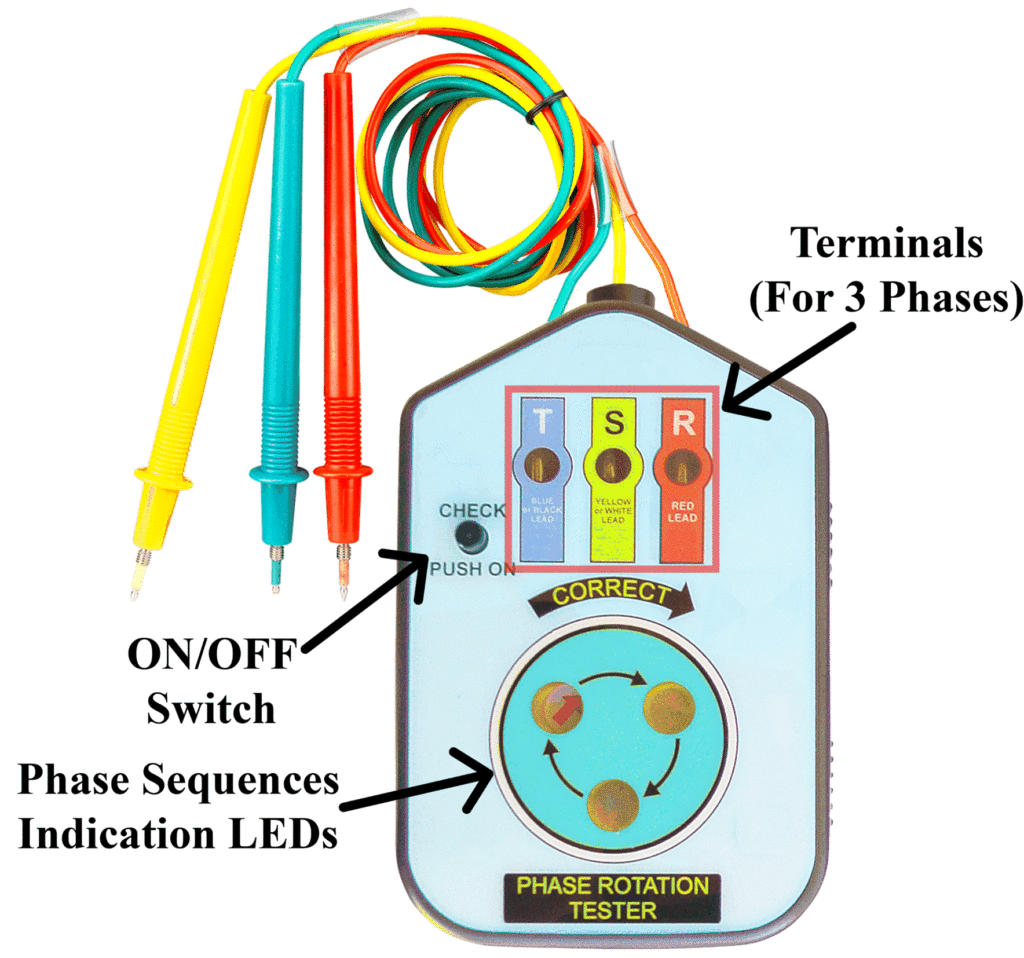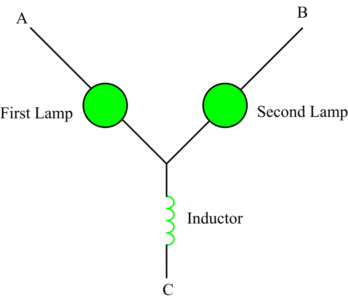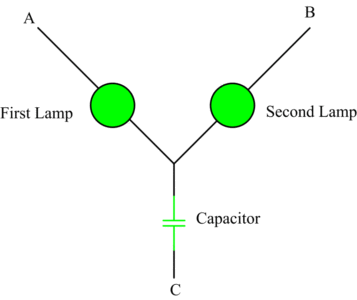A phase rotation meter, as shown in figure 1, is a device used to determine the phase order of a three-phase electrical system. In electrical system that contains three phases, AØ, BØ, and CØ, it is important to know the order before a motor or generator is mechanically connected to the electrical system. A motor that spins in the wrong direction on startup can result in damage to equipment or personnel.
Fig.1: Phase Rotation Tester
An operation where the motor is supposed to spin in the clockwise rotation the phase order is normally AØ, BØ, and CØ, and operation, where the motor supposed to spin in a counterclockwise rotation, means that the phase order is usually CØ, BØ, and AØ. Due to limited access to the wiring from the electrical system is important to use the phase rotation meter to determine the phase order.
- You May Also Read: Three Phase System in Detail
Static Type Phase Sequence Indicator | Static Type Phase Sequence Meter
In this type of meter, a couple of arrangements of lamps with capacitor or inductor are employed in order to point out the phase sequence. The proportionate brightness level and darkness of lamps determine the sequence of given three-phases. The following two arrangements are utilized for determining the phase sequence of given three phase supply.
In the first arrangement, an inductor and two lamps are linked in a way that two phases (A and B) comprise of lamps as loads and third phase (C) holds an inductor as shown in the figure.
Fig.2: Inductor type Static Phase Sequence Meter
When the meter is connected to the three-phase supply, the first lamp shines dimmer whereas the second lamp beams brighter for ABC phase sequence. For phase sequence ACB, the first lamp shines brighter whilst second lamp radiates dimmer.
In the second arrangement, standard lamps are substituted with neon ones and a capacitor is used rather than an inductor. It is to be mentioned that neon lamp does not glow at a voltage less than its breakdown voltage and this property avoids the uncertainness of bright and dim statuses of lamps of former inductor type indicator.
Fig.3: Capacitor type Static Phase Sequence Meter
The phase sequence is considered ABC if the first lamp shines bright whilst second lamp does not shine at all. If the first lamp stays dark whereas the second lamp shines bright, then the phase sequence is ACB.
How to use a phase rotation meter
- Locate and turn off main breaker supply.
- Connect the phase rotation meter alligator clips to the exposed copper or metal of the leads to be tested.
- Turn main breaker supply on.
- Observe the meter for rotation.
- Turn main breaker supply off and remove alligator clips from the circuit.


